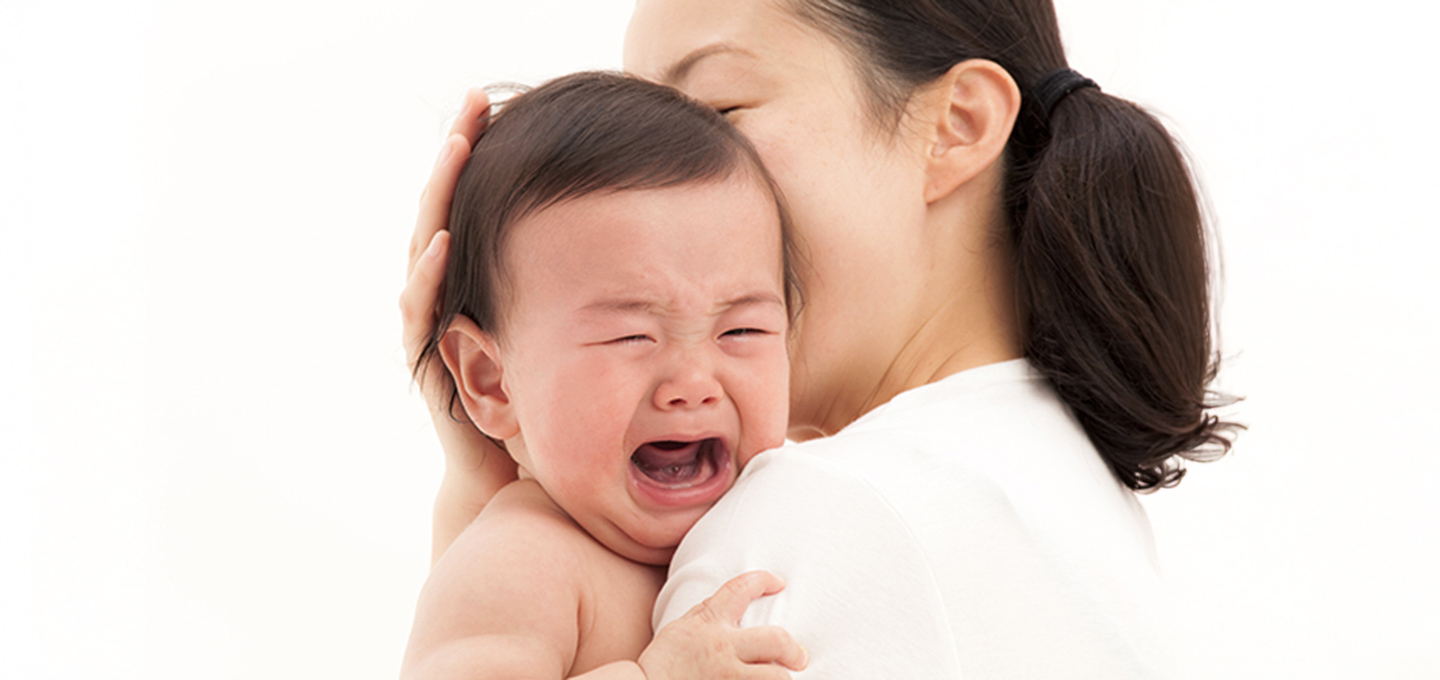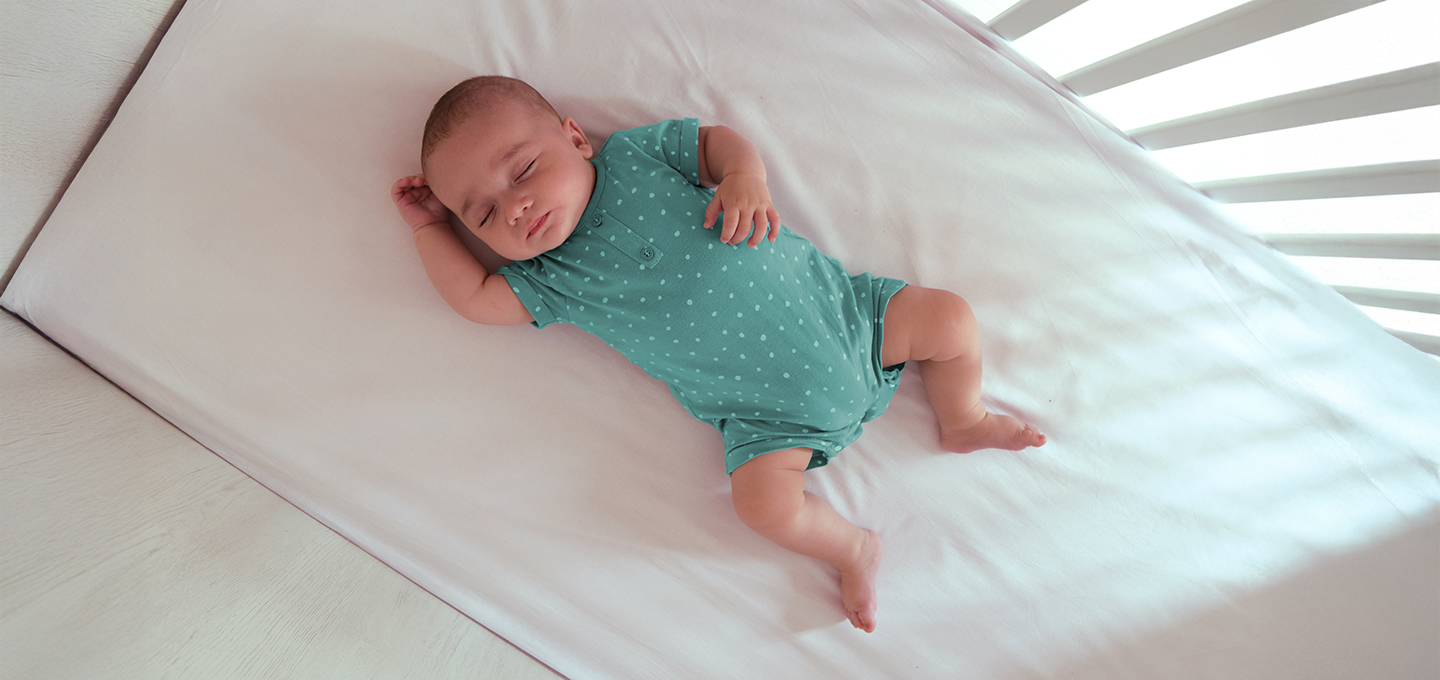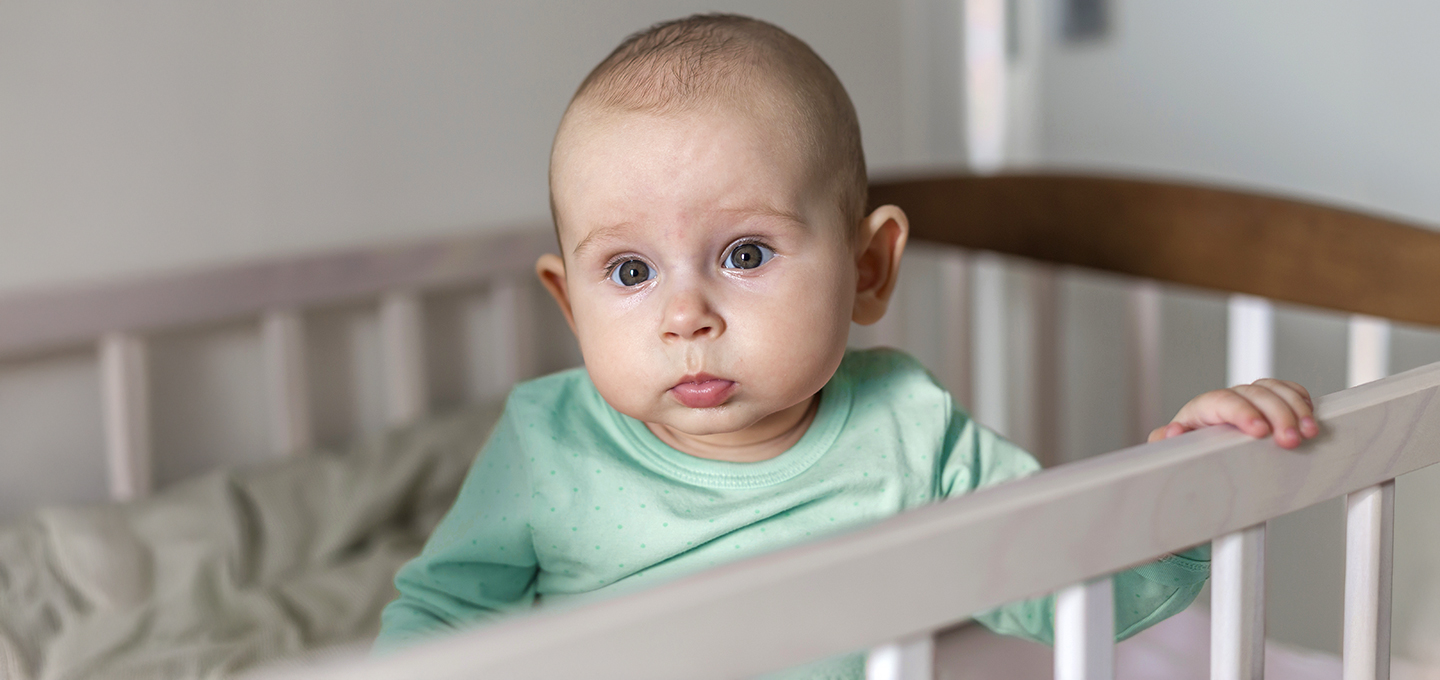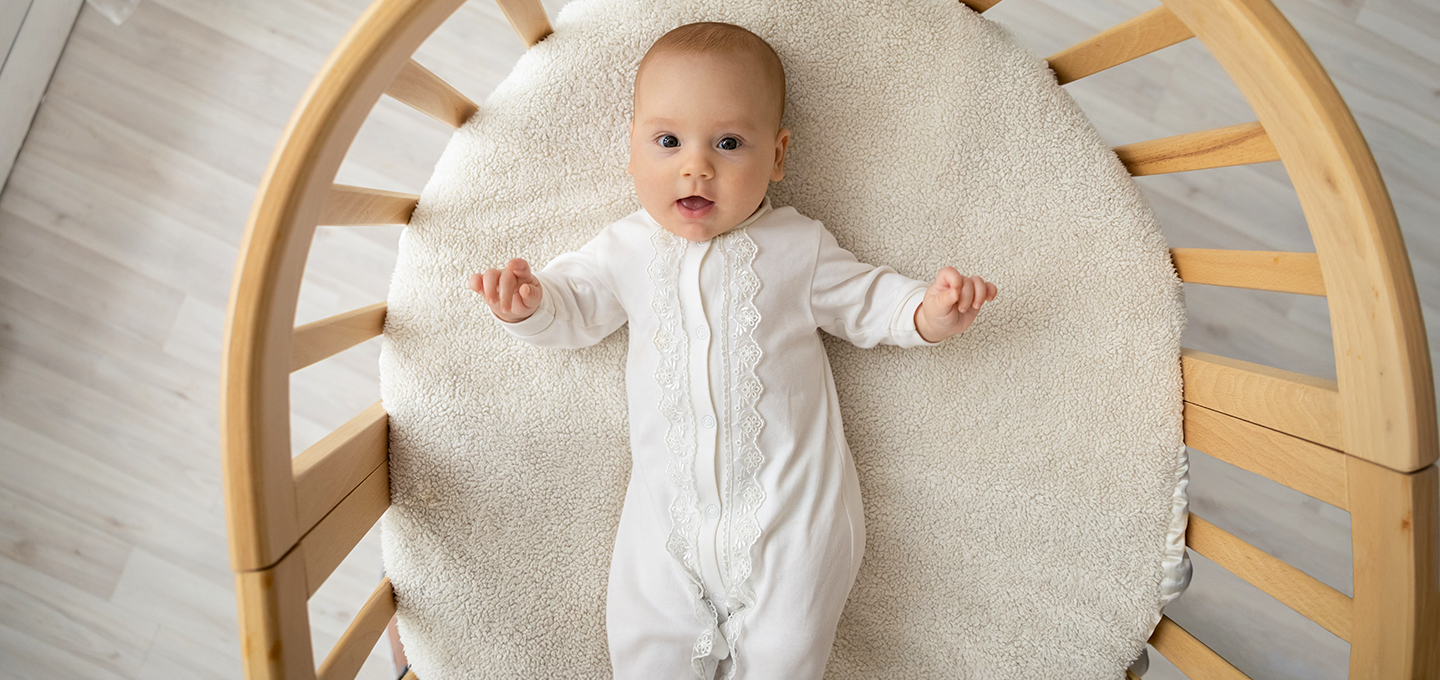- Baby
- Explore Baby Sleep
- How to Soothe a Crying Baby

How to Soothe a Crying Baby


IN THIS ARTICLE
![Crying: How Your Baby Communicates]()
Crying: How Your Baby Communicates
![12 Reasons Your Baby May Be Crying]()
12 Reasons Your Baby May Be Crying
![Smart Sleep Coach]()
Smart Sleep Coach
![16 Methods for Soothing Your Crying Baby]()
16 Methods for Soothing Your Crying Baby
![Advice for Parents: How to Cope When Your Baby Cries]()
Advice for Parents: How to Cope When Your Baby Cries
![The Bottom Line]()
The Bottom Line
Crying is your baby's way of letting you know they're hungry, uncomfortable, feeling uncertain, or even just a little gassy! Although you might often be able to interpret your little one’s cries, sometimes it can be difficult to figure out why they're crying and how to comfort them. Read on to find out why your baby won't stop crying, and learn how to soothe a fussy baby with our 16 soothing techniques.
Crying: How Your Baby Communicates
Since your baby can't verbalize their needs, just about the only way they can communicate is by crying, and it's normal for a newborn to cry for one to four hours every day. As a parent, it’s up to you to try to figure out why your newborn or older baby might be crying or screaming during the day or at night. It can be a tough job, but you're the person to do it—trust in your abilities!
After a while you may start to recognize the different cries your baby makes. For example, your little one’s hungry cry may be completely different from a cry signaling they're feeling distressed. Eventually you'll get better at picking up on your baby's signals (cries) and you'll know how to get your baby to stop crying by responding to their cues.
12 Reasons Your Baby May Be Crying
Here are some of the main reasons your baby may be crying:
1. It may be time for a feeding. Pay attention to the signs of hunger; for example, your baby may be smacking their lips or moving their hands to their mouth.
2. They may be too cold or too hot. Your baby could be crying because they're uncomfortably overdressed or underdressed. A good rule of thumb is to dress your baby in the same number of layers that you are in.
3. It may be time for a diaper change. As a newborn, your baby pees and poops quite often, and they could be crying because they're uncomfortable from being wet or soiled. Frequent diaper changes can help keep them comfortable and also reduce the risk of diaper rash.
A few ways you can check if your baby's diaper needs to be changed include:
Looking at the wetness indicator
Giving it a quick sniff
Touching the inside for wetness
Noticing if it's saggy or heavy.
4. They may have eaten too much or have reflux. Try to wait at least two to two-and-a-half hours before beginning another feeding as overfeeding may lead to discomfort. If your baby is spitting up or vomiting frequently after a feeding, they may have gastroesophageal reflux disease (GERD). Contact their healthcare provider if you're seeing the following signs:
Frequent spitting up or vomiting
Fussiness after feedings
Losing weight or not gaining weight.
5. They may have a food allergy or intolerance. It could be that your baby has an allergy to soy or an intolerance for lactose, either of which can make them uncomfortable. Talk to your healthcare provider if you suspect your baby may have a food allergy or intolerance. If you're breastfeeding, the healthcare provider may recommend that you remove foods such as dairy products, caffeine, and spicy or gassy foods from your diet as these are common irritants. If you're formula-feeding and your baby is allergic to soy or milk, for example, the healthcare provider may recommend switching to a different formula, such as a hypoallergenic one.
6. They may be teething. The timing of teething varies quite a bit, but when your baby turns about 3 or 4 months old, their teeth may start erupting and with this can come teething pain. To ease your baby's discomfort, try massaging their sore gums with your finger or offer them a firm rubber teething ring to chew on.
7. They may have a fever. If you suspect your baby may have a high temperature, check it with a thermometer to confirm. A rectal reading of 100. 4 degrees Fahrenheit or higher is considered a fever. Contact your baby's healthcare provider immediately if:
Your baby is 2 months old or younger and has a fever of 100.4 degrees Fahrenheit or higher
Your baby is between 3 and 6 months old and has a fever of 101 degrees Fahrenheit or higher
Your baby is older than 6 months old and has a fever of 103 degrees Fahrenheit or higher.
8. They may be overstimulated. Your baby can become overwhelmed by too much activity, such as when you go on vacation or are having houseguests. You might consider removing them from all of the action until they're settled.
9. They may be bored. If they’re crying because they are bored, singing or humming to them may help. A change of scenery, such as taking them for a stroll, can also help.
10. They may be tired. Some babies need to cry a little before falling asleep at night. If your baby is screaming at night, it might be because they're overtired. Put them in their crib on their back and let them be. If they're tired, it won't be long until they stop crying and fall asleep. For more tips on helping your baby sleep, check out our article on baby sleep training.
11. They may be stressed or need to release pent-up energy. Your baby may have periods throughout each day where they cry for no apparent reason. Crying can be a way for them to relieve tension by blocking out the world or by expending some of that extra energy. Oftentimes, after one of these crying spells, they may seem calmer, and later on in the day or at night they may nap or sleep more restfully.
12. They may have colic. This frequent, inconsolable type of crying often sets in around the time your baby is 4 weeks old and may last until they're about 3 or 4 months old. If it’s colic, your baby may cry with their legs drawn in and they may turn red from all the crying. Although experts aren’t quite sure what causes colicky crying, some of the soothing techniques here might help limit or prevent this type of crying.
16 Methods for Soothing Your Crying Baby
In the first months, it's best to respond to your baby's cries as soon as you can. This helps reassure them that you are there and responsive to their needs. Don't think of this as spoiling your child. That's not the case. Answering your baby's cries promptly can get them to stop crying and help them to cry less in the long run.
If you know why your baby is crying—for example, they need a feeding or a dry diaper—then it's easier to remedy the crying, but sometimes you may have to explore a few different options in order to soothe and console your baby when they won't stop crying. With some trial and error, you may discover the best methods for how to soothe your crying infant.
Try these ways to soothe a crying baby to learn which ones work best for your little one:
1. Swaddle your baby. Wrapping them in a swaddle blanket can give them a sense of security. You'll want to stop swaddling your baby when you see signs of them trying to roll over, which could come when they're about 2 months old.
2. Take your baby into a dim or dark room. This may work well if your baby is overstimulated from too much activity, for example. Place your baby in their crib on their back with the room dimmed or dark. If your baby is under 2 months old, you might like to swaddle them first.
3. Give your baby a soothing bath. The warm water may help calm your baby.
4. Pick your baby up and stroke their head or gently pat their chest or back.
5. Burp your baby. If you suspect your baby may be gassy after a feeding, you'll want to burp them regularly after meals. Try one of these positions for burping your baby:
Hold your baby against your chest with their chin placed over your shoulder. Meanwhile, support them with one hand as you gently pat their back with your other hand.Put a burping cloth over your shoulder first to prevent messes.
Place your baby on your lap sitting upright. Support their head and chest with one hand while you gently pat their back with your other hand.
Lay your baby over your lap with their tummy facing down. At the same time, support their head so that it is at a higher level than their chest, and gently pat their back.
6. Bring your baby to your chest and take deep breaths while holding them close to you. Skin-to-skin-contact can be a nice comfort for your baby.
7. Play calming sounds. You could use a white-noise machine or a fan, for example. These types of sounds and vibrations may give your baby a sense of security.
8. Play soft music. Your baby may calm down to the sounds of relaxing classical music, for example.
9. Sing or talk to your baby. Your voice can be reassuring to your little one. And even if you don't have the best singing voice, you could try singing or humming a lullaby.
10. Try rocking your baby. The rocking movement of sitting in a rocking chair or glider may remind your baby of the movement they felt inside the womb. You could also simply sway your baby in your arms to replicate the motion.
11. Place your baby in a swing or bouncer. The movement can have a calming effect.
12. Go for a stroll with your baby. Put them in their stroller and go for a stroll around the block or in a nearby park.
13. Take them for a car ride. Put your baby in their infant car seat and drive around the neighborhood. The car's vibrations may help soothe them.
14. Wear your baby in a carrier. Place your baby in a carrier, and walk around the house as you do chores, or go for a walk outside. The motion and closeness to you may help your baby feel secure.
15. Have your baby suck on their thumb or a pacifier. Some babies find the sucking motion soothing. Giving your little one a pacifier, for example, can help soothe your baby when it's not feeding time yet. Just keep in mind that if you're breastfeeding, you should wait until your baby is at least 1 month old before offering a pacifier. Don’t force the pacifier if your baby doesn't like it or want it.
16. Give them some quiet alone time in their crib. Place them on their back in their crib and let them cry it out. They may be tired. In fact, some babies can't fall asleep without crying. You may even find your baby falls asleep more quickly at night once they've cried it out.
Advice for Parents: How to Cope When Your Baby Cries
Sometimes, it can be really upsetting to hear your baby cry, especially when nothing you do seems to console them or if you’re not sure why they’re crying. Dealing with a baby screaming at night can be particularly exhausting. You may have even tried multiple ways of soothing them, but you still can't get them to calm down.
During these times it's important not to take your baby's cries personally. You haven’t done anything wrong and you’re not a bad parent. Remember, it's normal for babies to cry as a way to communicate their needs and even just to let off steam.
6 Coping Strategies for Parents
Here are some coping methods to help you stay calm when your baby cries:
Try taking a deep breath and count to 10.
Let your baby cry it out for 10 to 15 minutes.
Try listening to calming music.
Give a close friend or family member a phone call for emotional support; you could even ask for help to mind your little one for a few hours so you can take a break.
Do some chores around the house to distract you, like washing the dishes or vacuuming—you may even find the sound of the vacuum calms your little one!
Leave your baby safely in their crib, close the door, and regroup in another room for 10 minutes or so. It's completely normal to get frustrated, but you can't let it affect the way you react. It's never safe to shake, hit, or jerk your baby as it can cause brain damage and endanger their life! Instead, take some time out in another room and go back in when you feel calm and ready.
Whatever you do, make sure your baby is safely in their crib or playpen or being watched by your partner or another adult while you take some time out.
If nothing seems to work or if you suspect your little one has colic, call their healthcare provider. It could be that your baby needs medical attention.
FAQS AT A GLANCE
There are many methods you can try for calming your crying baby. Here are some that you might consider trying:
- Swaddling
- Giving your baby a bath
- Patting them on the back
- Burping them
- Playing calming sounds or music
- Rocking your baby
- Singing to your baby
- Wearing your baby in a carrier
- Giving them a pacifier if they're over 1 month old.
Your baby's fussiness could be due to a number of reasons, such as:
- Hunger
- Being too cold or too hot
- Needing a diaper change
- Needing to be burped
- Teething
- Being ill
- Being overstimulated
- Being bored
- Feeling unsettled
- Having colic.
If your baby won't stop crying and it gets worse throughout the day, it may be colic, oftentimes defined as excessive crying. A child with colic may cry or scream, extend their legs or pull them up, and sometimes pass gas. A crying spell like this can happen any time during the day but most often occurs at night between 6 p. m. and midnight. This period of time is sometimes referred to as the witching hour(s).
The Bottom Line
There are lots of ways you can soothe your little one when they’re distressed, but it might take some trial and error to see which one works best for your baby. The next time your baby cries—and it's not because they're hungry or need a diaper change—try one of the soothing methods in this article to see which one works. Although your little one’s crying spells can be heartbreaking to hear, they will pass in a little while.
- Healthy Children: Swaddling: Is it Safe?
- Kids Health: What to Do When Babies Cry
- Mayo Clinic: Crying baby: What to do when your newborn cries
- Healthy Children: How to Calm a Fussy Baby: Tips for Parents & Caregivers
- Cleveland Clinic: Well-Baby Care: 4-Month Visit
- Kids Health: Your Child's Development: 2 Months
- Mayo Clinic: Colic
- Book: Caring for your baby and young child birth to age 5, Sixth Edition Paperback – November 2, 2014 by American Academy of Pediatrics (Author)
The information in this article is based on the expert advice found in trusted medical and government sources, such as the American Academy of Pediatrics and the American College of Obstetricians and Gynecologists. You can find a full list of sources used for this article below. The content on this page should not replace professional medical advice. Always consult medical professionals for full diagnosis and treatment.
Mandy Treeby is the co-founder of the Smart Sleep Coach by Pampers™ and a Pediatric Sleep Consultant who has spent over a decade working with parents & babies around the world. Understanding just how many families are suffering sleep challenges, ignited her passion to make quality baby sleep coaching available to everyone. A Mom of two, she’s focused on ensuring parents gain the confidence and knowledge to help their babies’ become super sleepers.
Read More














